There are the Minutes from the DSES Annual Board & Membership Meeting, held Monday June 10, 2019 in Colorado Springs. The minutes are by our new DSES Secretary Floyd Glick.
http://dses.science/wp-content/uploads/2019/06/Minutes_2019-06-10.pdf
Deep Space Exploration Society
Colorado — Radio Astronomy at the Speed of Light
There are the Minutes from the DSES Annual Board & Membership Meeting, held Monday June 10, 2019 in Colorado Springs. The minutes are by our new DSES Secretary Floyd Glick.
http://dses.science/wp-content/uploads/2019/06/Minutes_2019-06-10.pdf
These are the slides from Dr. Richard Russel’s presentation at our May 2019 DSES Science Meeting.
Pulsar Galactic Navigation – DSES Science Meeting, May 2019
During the past year, Dr. Russel led us in measuring the Doppler shifts of galactic neutral hydrogen (HI). Building on his experience from navigation, he then developed his ideas on how to use HI Doppler shift measurements to navigate from star to star across galactic space.
This year we are undertaking measuring the pulse time of pulsars. Pulsars are understood to be the star remnants of supernova explosions. They become what are called neutron stars. The supernovas compress the stars tightly into enormous densities so that their matter become neutrons, and the stars are only about 7 miles in diameter. Due to the conservation of angular momentum, their spin increases very rapidly. The youngest rotate with periods of miliseconds. Their magnetic poles are often offset from their spin axes. Electrons spin rapidly along the outgoing magnetic field lines of the poles, producing synchrotron radiation, which in turn produce broad band radio signals. If a magnetic pole is oriented so that it points at Earth during the rotation, we receive a radio pulse, and maybe pulses at other wavelengths too. (That is how pulsars were first discovered during the late 1960s.)
The pulses are very regular. But the spin of the pulsars gradually lose energy and slow down over time too.
Dr. Russel took his ideas for navigation, and now he has developed a concept for doing interstellar navigation using pulsars as references. That’s what this slide set is about. He just submitted a paper on the topic to the journal of the Society of Amateur Radio Astronomers.
– ed. Gary Agranat
(Editor’s Note: This is Ed Corn’s report of our work at the Plishner radio telescope site during the weekend of May 18, 2019 – Gary, WA2JQZ)
I arrived about 9:30 AM and proceeded to the generator shed to install breakers and to survey the conduit route for 2 extra camper hook ups. The breaker box is ready. I will run conduit and wiring during another trip prior to the open house.
Steve Plock arrived shortly there after. We traveled separately so Steve could stay over with Paul Berge, as I have a graduation to attend on Sunday.
We looked at the ham radio tower project. All the hardware is on site but tower climbing is out for most of us. Steve decided we will assemble the tower on the ground, and tip it up with a winch at a later trip. We need a few extra parts to do this which are easily obtained or fabricated. Gary Agranat arrived and went to work on the vertical antenna. The vertical was damaged during the blizzard storm several weeks ago. He has a list of all needed parts for fixing on the next trip.
Steve moved the dish to the work stand and checked the control voltage for the feed to the preamps, and adjusted for voltage drop in the line from the communications trailer.
Steve and Gary then worked on tuning the 16o meter and 80 meter wire antennas. (Gary added: We trimmed the lengths to retune the antennas to about the center of the ham bands. The 160 meter antenna was tuned to 1.9 MHz, with a best SWR of 1.7:1. The 80 meter antenna was tuned with an SWR of 1:1 from 3.8 to 3.9 MHz. Before the tuning, each antenna was slightly long, which therefore gave better performance at the low ends of the bands. The retuning enabled better resonance in the phone portion of the bands, where several members like to participate in nets.)
I moved into the bunker and pulled wire for the sub main panel in the battery room, in preparation for the hot water heater for the sink and shower and the sewer pump system. The sub main is complete, ready for extension of the conduit runs on a future trip.
Paul arrived late afternoon and stayed the weekend with several items he wanted to work on.
Ed KC0TBE
Photos by Gary

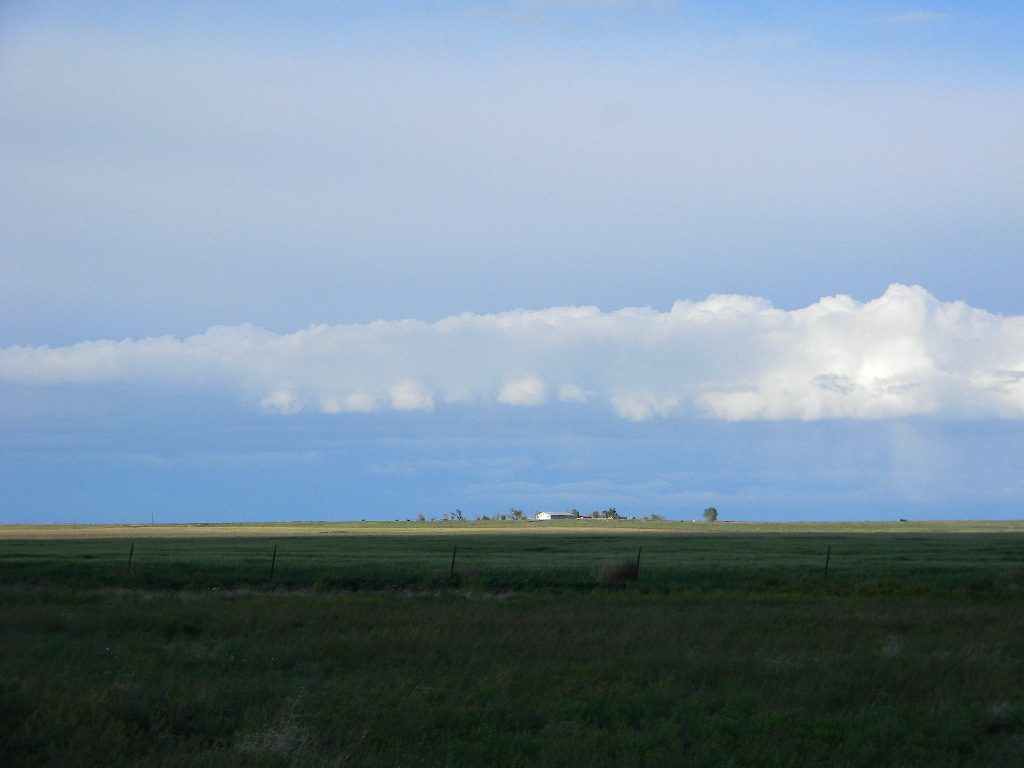

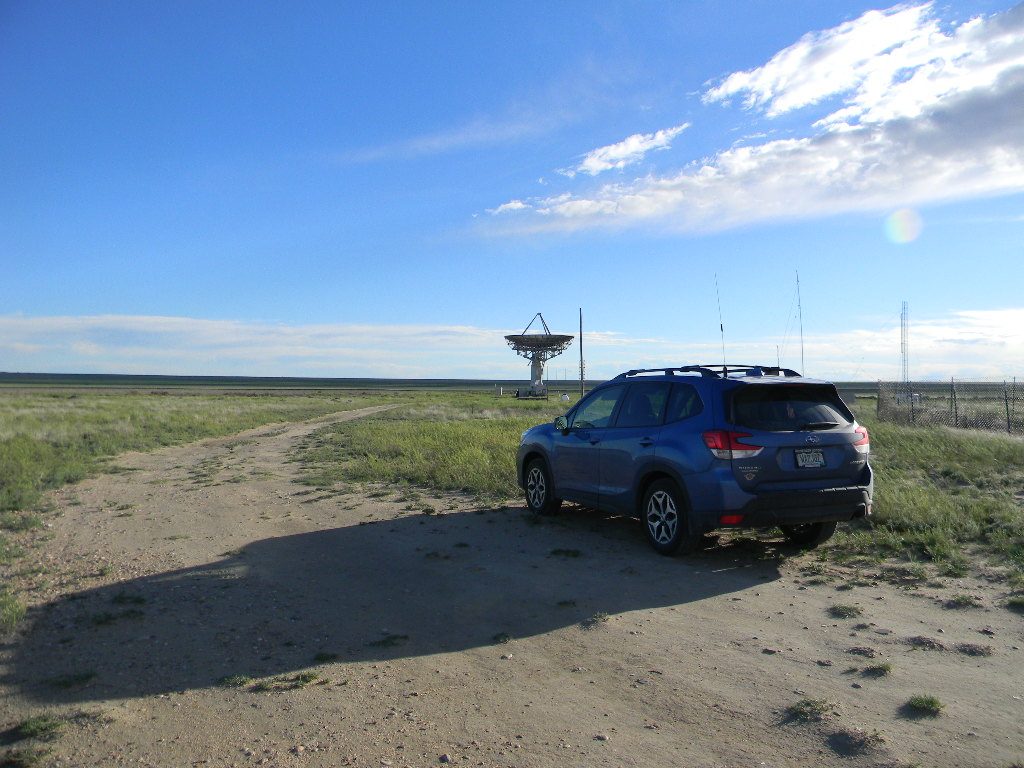
By Gary Agranat. Photos courtesy of SARA. With contributions by Bob Haggart, Steve Plock, and Skip Crilly.
The 2019 Society of Amateur Radio Astronomers Western Conference this year was held in Boulder, Colorado, from March 22nd to 25th. The Deep Space Exploration Society co-hosted the conference this year, with a field trip to the Plishner radio telescope site in Haswell. DSES members presented 5 of the talks at the conference. The venue location was the Boulder campus of the National Center for Atmospheric Research (NCAR).
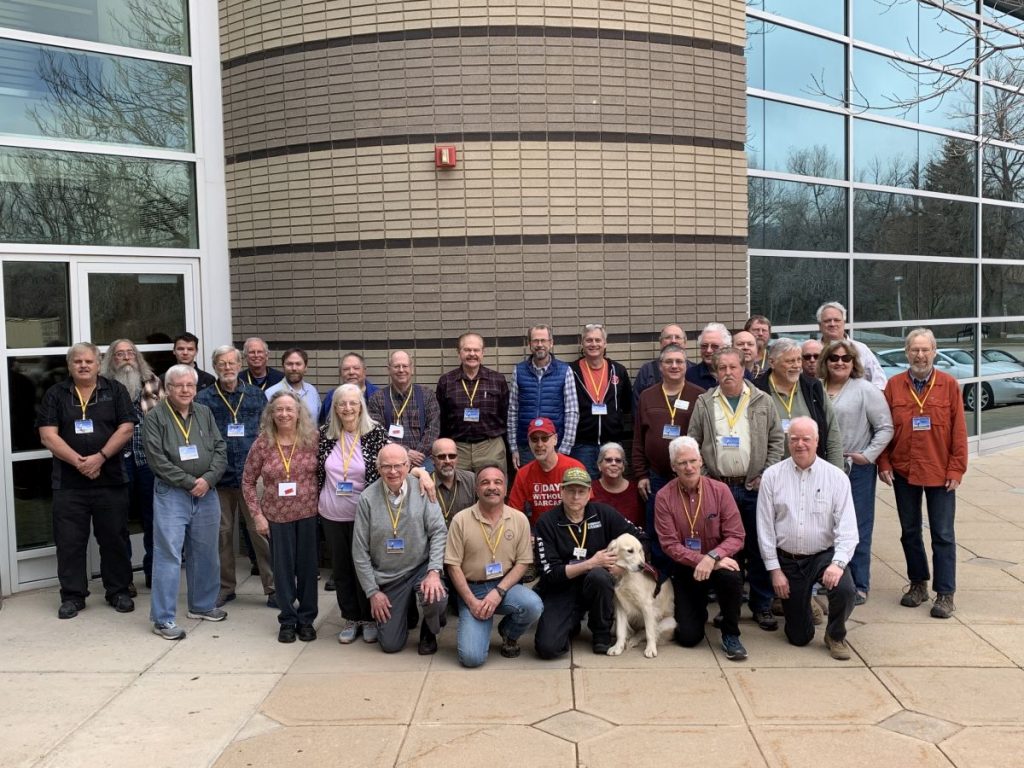
The conference activities began on Friday afternoon, with a visit to the NCAR Mesa Labs High Altitude Observatory (HAO). During the weekend the conference was hosted at the NCAR Center Green conference Center in Boulder. Nine talks were presented by SARA members on a variety of amateur radio astronomy topics. Plus the keynote address was by the HAO Director Scott McIntosh about a regular predictability of the solar cycle based on an understanding of the sun’s magnetic physics.
DSES members presented 5 of the papers at the conference:
DSES Contributions to the 2019 SARA Western Conference – with abstracts: http://dses.science/wp-content/uploads/2019/04/DSES-Contribution-to-the-2019-Western-Conference.pdf
More information about the conference program and talks can be found on the SARA website. http://www.radio-astronomy.org/node/301
Also attending the conference from DSES were Ray Uberecken, Steve Plock, Bill Miller, Paul Berge, Brian Nelson, and Gary Agranat.
Over the weekend were field trips to two sites: The North Table Mountain antenna site operated by the National Oceanic and Atmospheric Administration, and the Little Thompson Observatory at the Berthoud High School. Table Mountain is the site where DSES got its start, using the two 60 foot dish antennas there. That was one of the locations we visited on the site. We also visited Terry Bullet’s lab, and a lab for measuring radar cross sections of test objects (like military personnel carriers). The group went for dinner Saturday evening at the Three Margaritas Restaurant in Longmont.
For Sunday evening and Monday, DSES sponsored a field trip visit to its 60-foot dish antenna site at Haswell. Ahead of time, DSES members help prepare the site for the visit, and helped with providing food. Then, much of the visit time was devoted to touring and discussions and getting to know one another better. The dish antenna was made available for observing.
* * *
Bob Haggart wrote about the work he contributed: “I went to the site on Sunday and stayed overnight. While there I cleaned up the ops trailer, placed a shelving unit to help keep order in the area. I also installed a camera on the rear door, in order to view the dish antenna movement. That evening I lit up the dish with a single light so that it can be seen at night.” It made the dish appear as a “ghost-like ship”. Bob also mentioned the amount of mud that made cleaning difficult.
Steve Plock wrote about additional work: He left the conference Sunday afternoon, stopped at his home to pick up frozen pizza for serving to the group, and proceeded to the site. He delivered a large microwave oven as well. He stayed overnight with Skip Crilly at the guest house in Haswell. “For quite some time on Monday I helped Skip with his new setup to make sure it worked OK. He put in a new receiver system for the SETI data acquisition. The photo with the feet was me climbing into W9YS’s vehicle that had locked keys inside.” Steve and Bill Miller took several visitors on tours of the pedestal. “The dish antenna was made available for observing. ” Several other DSES members helped with the site visit, including Ed Corn and Rich Russel.
Skip Crilly also wrote: “In between DSES member Skip Crilly’s endless story-telling, a new simultaneous SETI pulse detection receiver and its software was installed in the comms trailer. The new receiver system has approximately twice the pulse detection throughput as the previous system, which was used for simultaneous SETI with Green Bank, since late 2017. Details about the 2017 to 2019 simultaneous pulse observations are in a presentation Skip gave at the SARA Western Conference. More SETI fun will be forthcoming, especially when the third simultaneous dish comes on line, planned for mid-2019. Stay tuned and keep looking up!”
Thanks to everyone in SARA, DSES, Little Thompson Observatory, and NCAR who supported and made this a great conference. And thanks to everyone who participated.
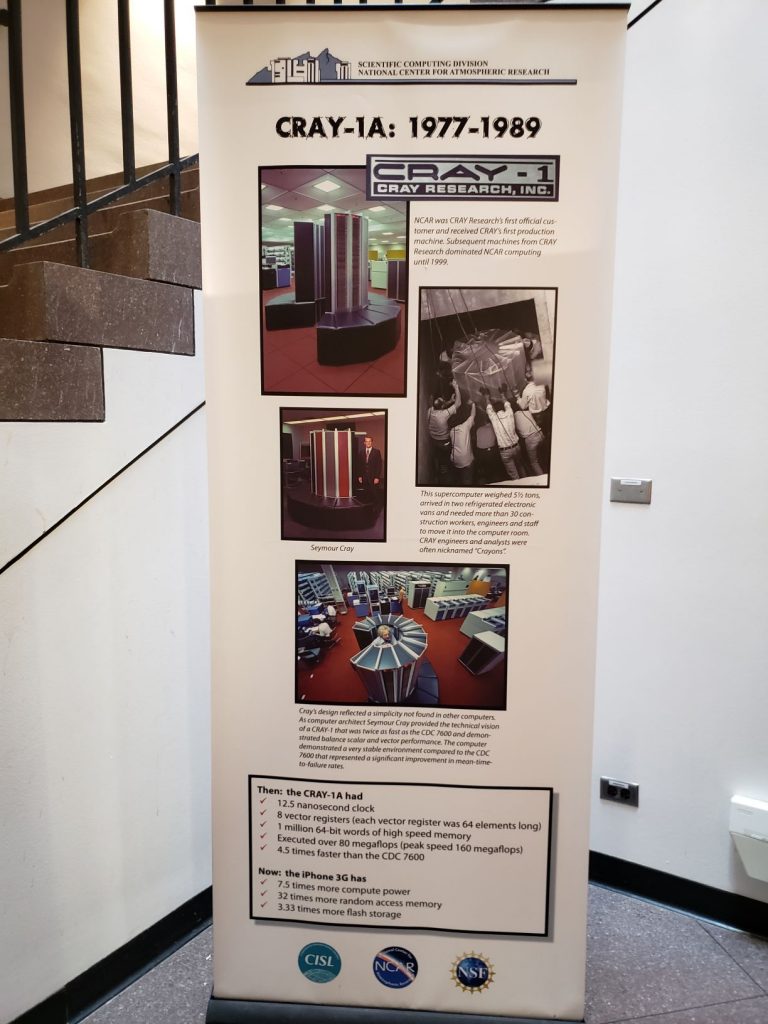
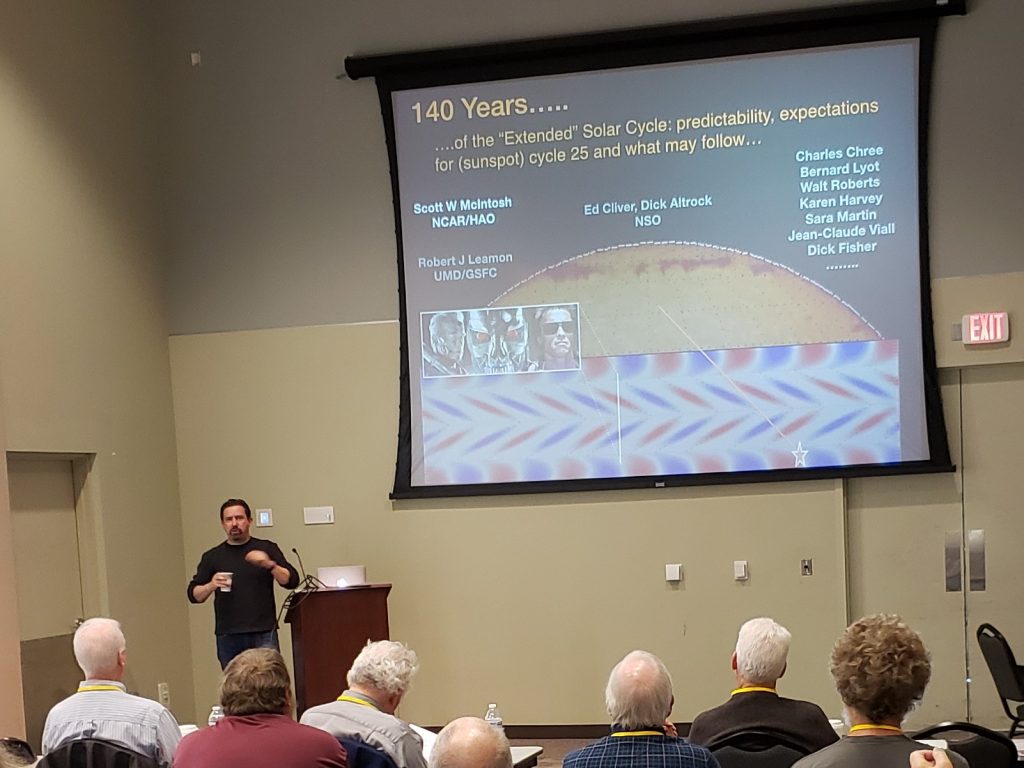
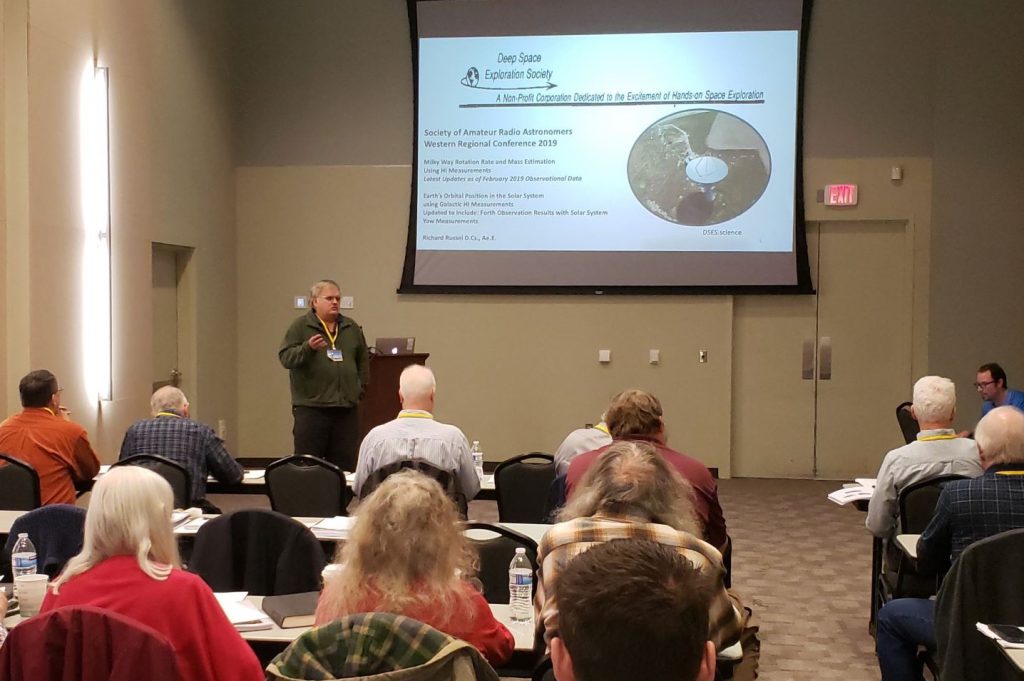
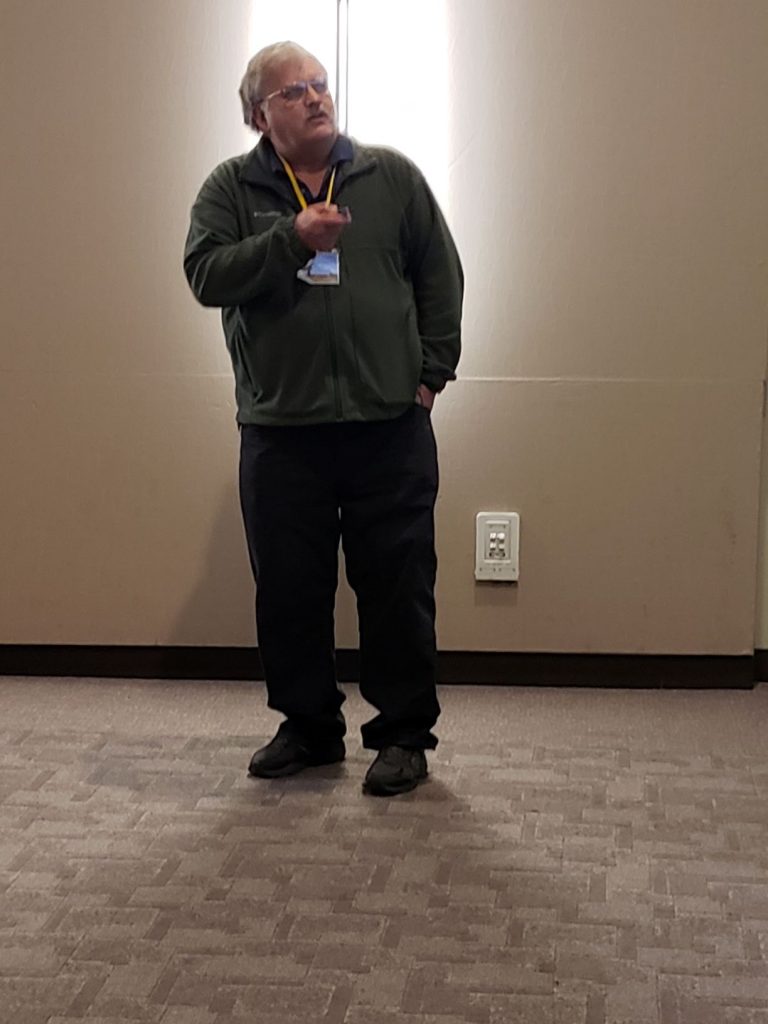
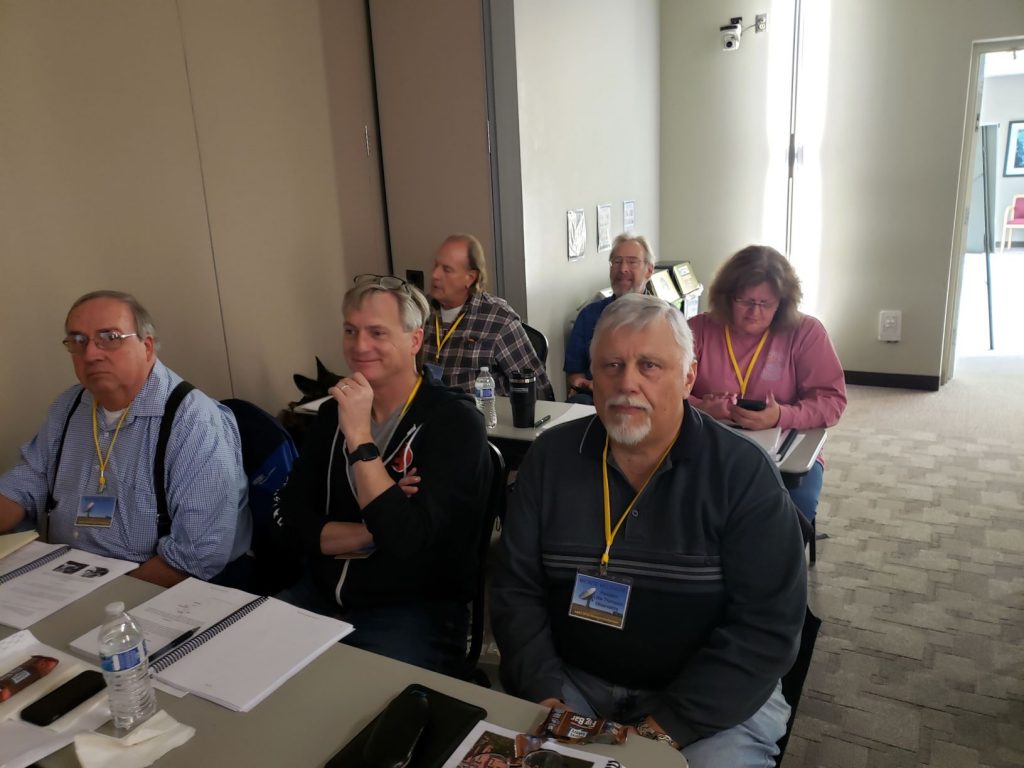


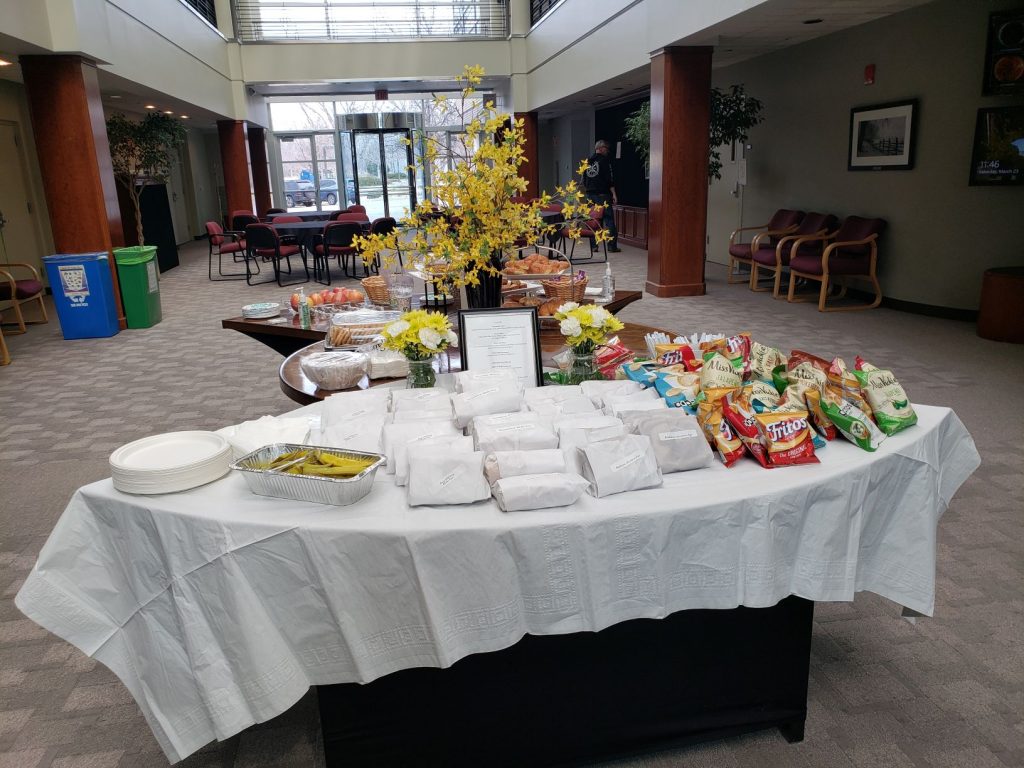
Visit to Table Mountain – Tour of Terry Bullets lab.
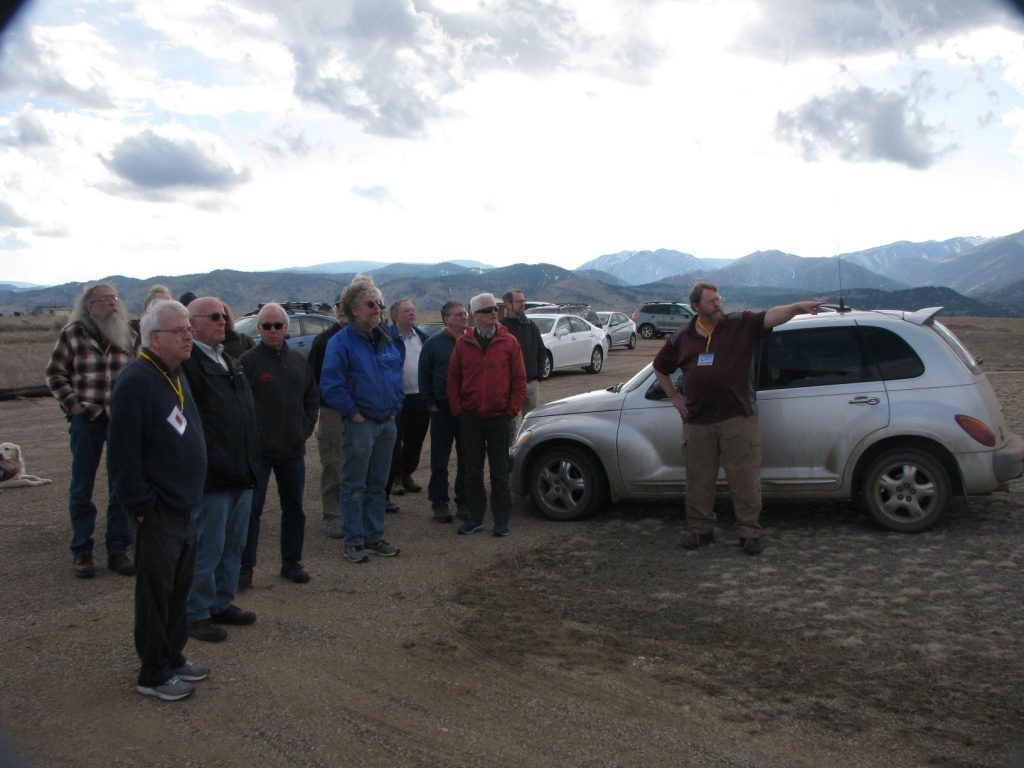
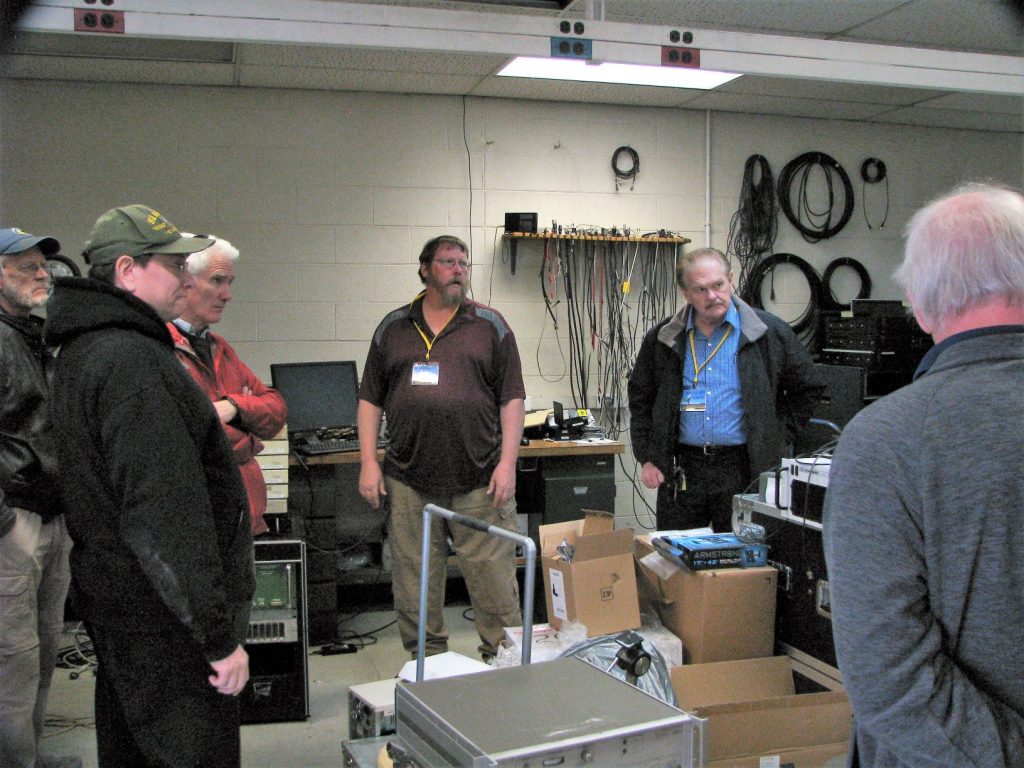

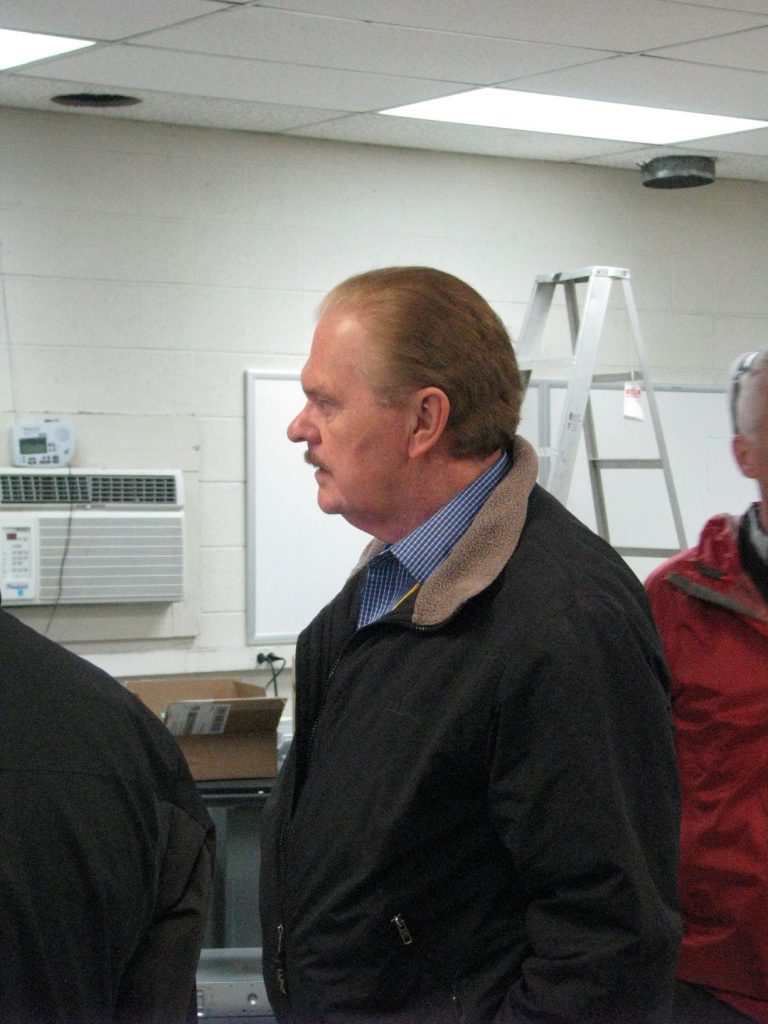
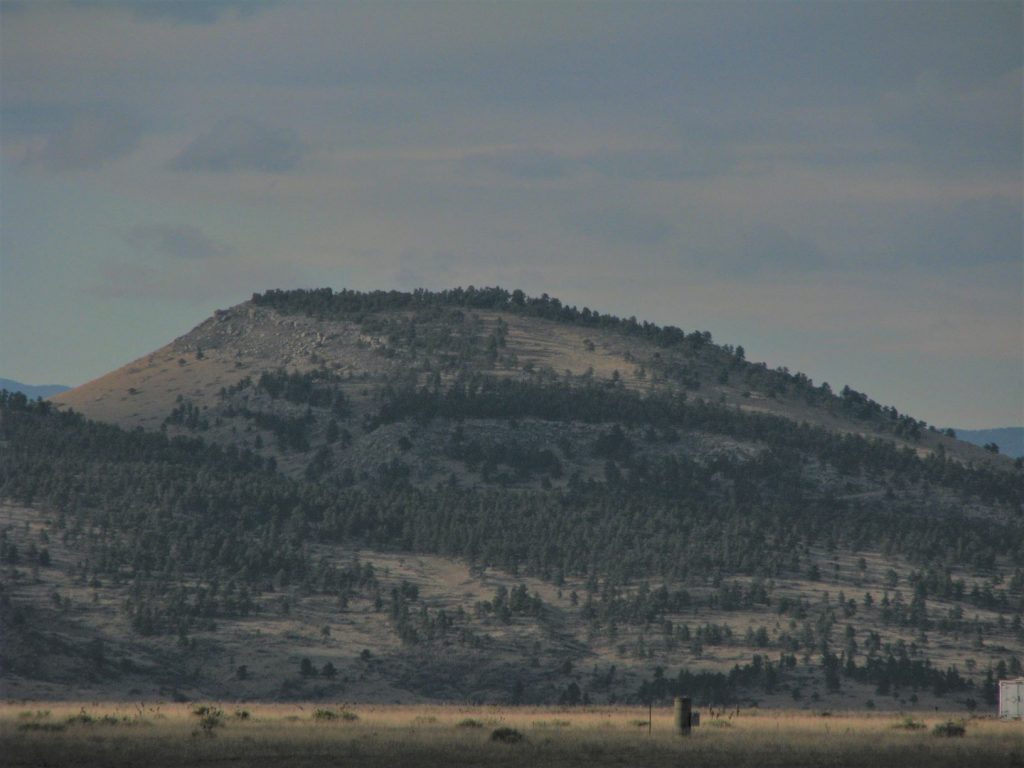
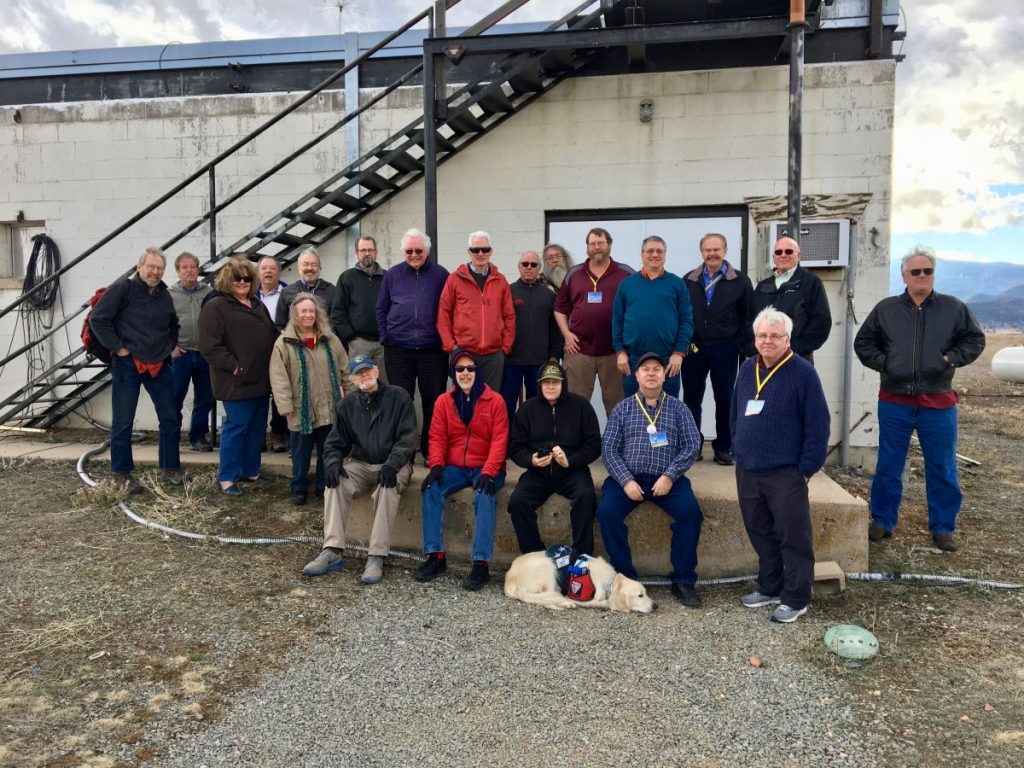
Visit to the twin 60-foot dish antennas on Table Mountain, where DSES started in 1991.
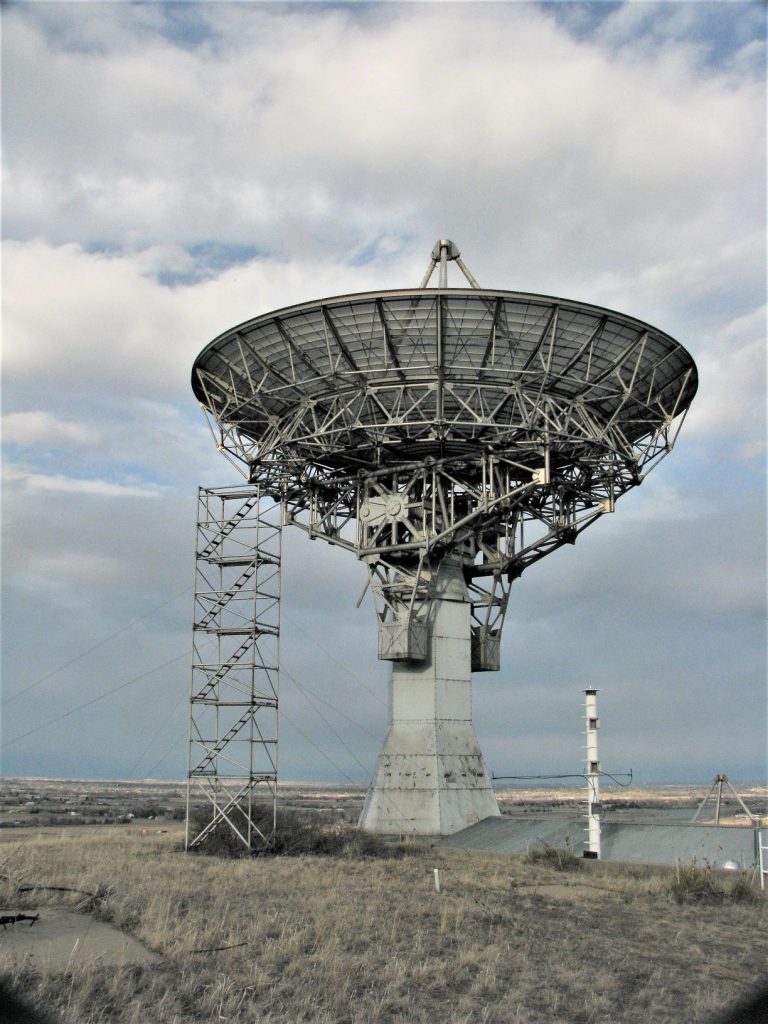
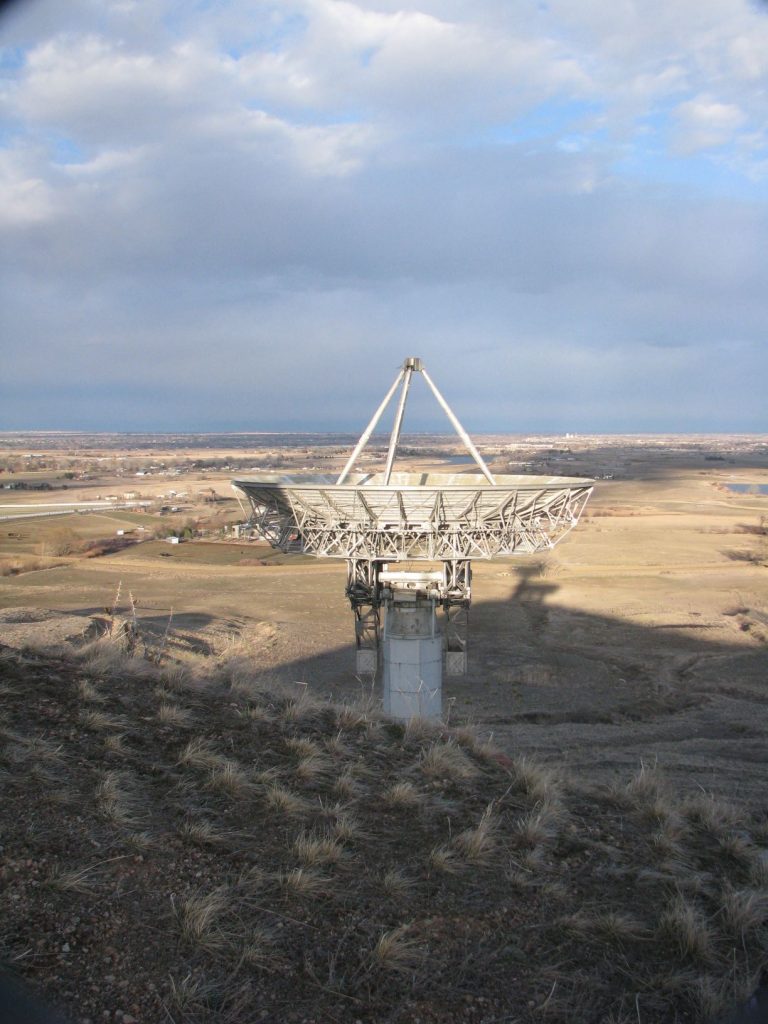
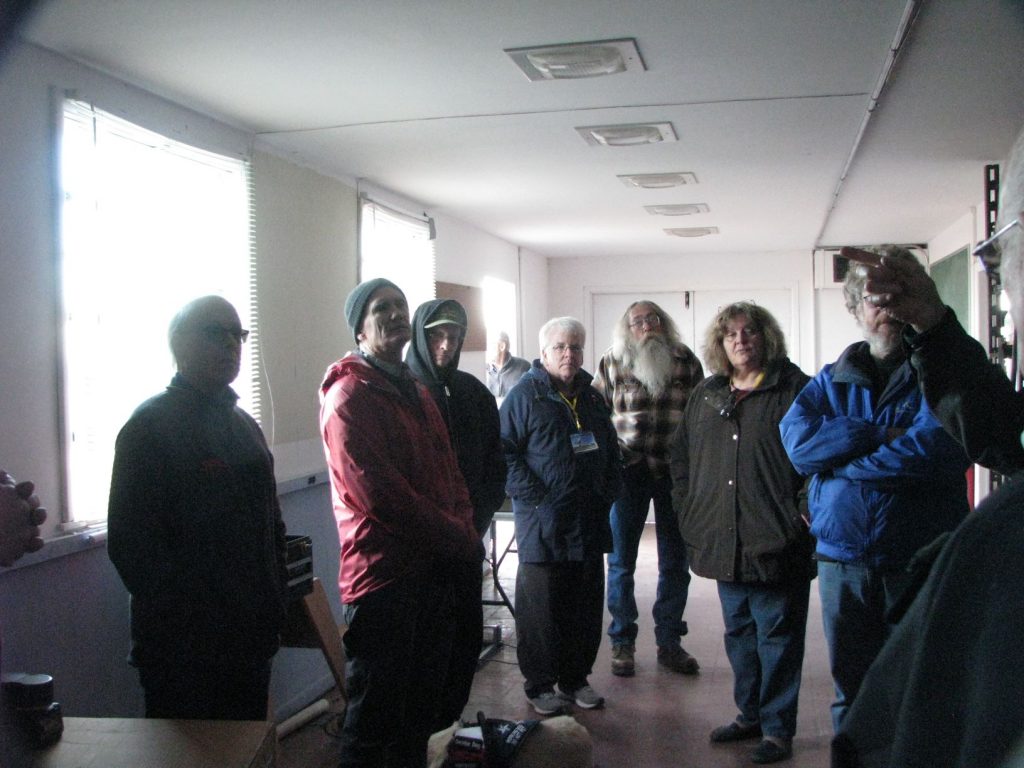



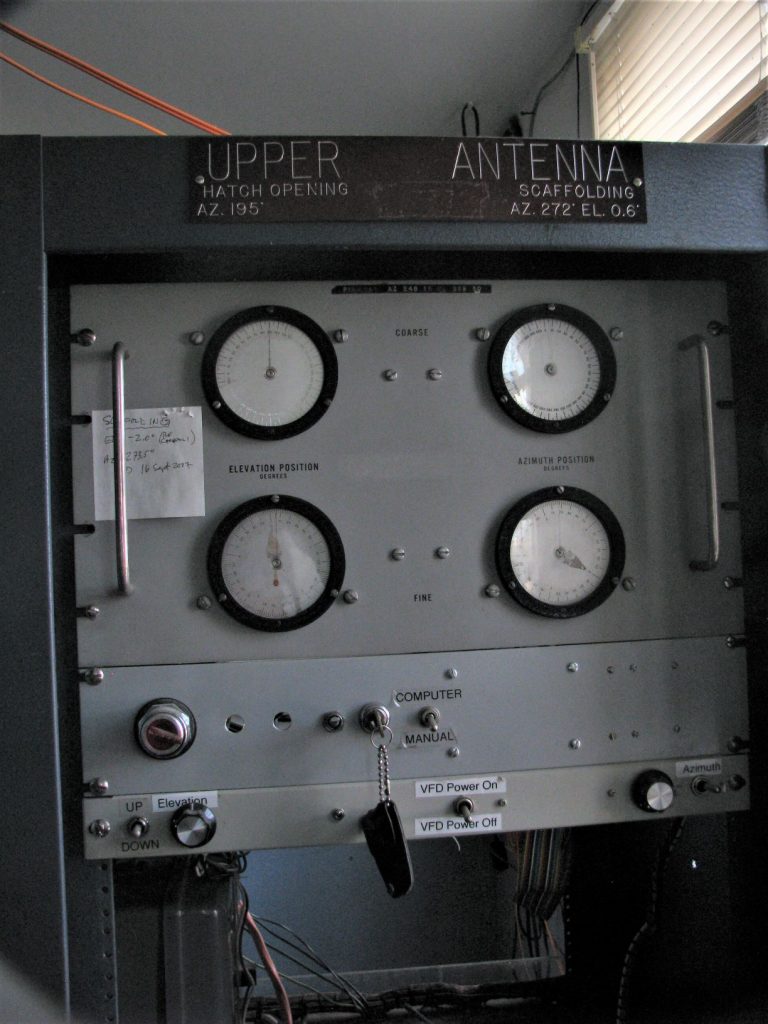
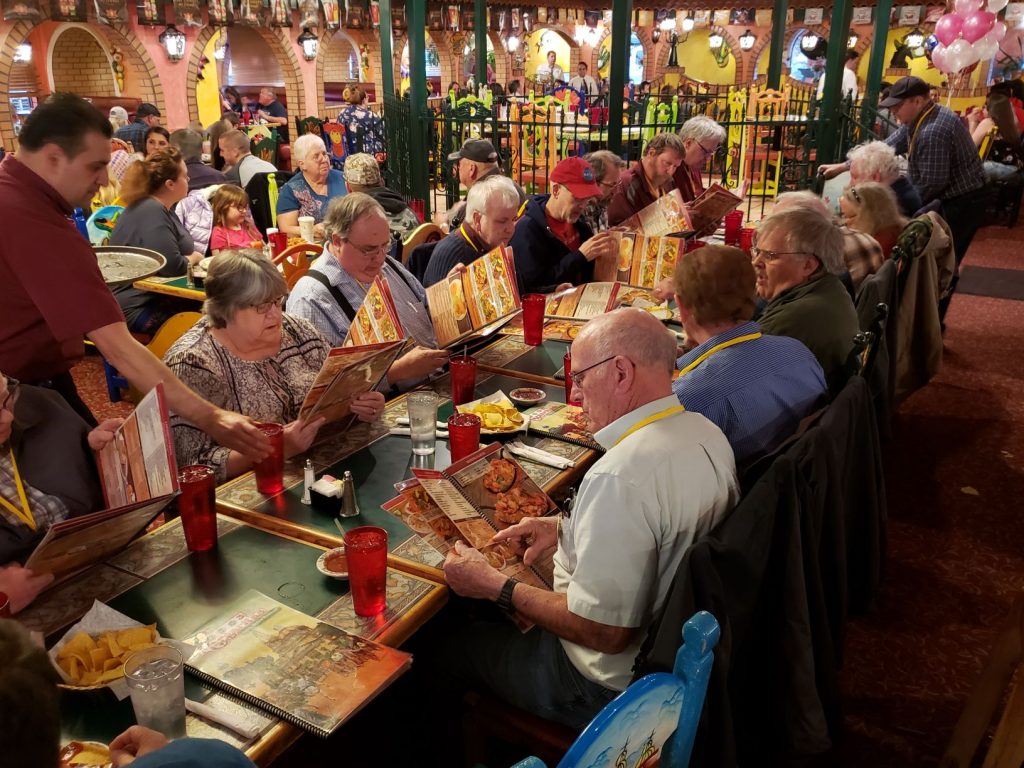
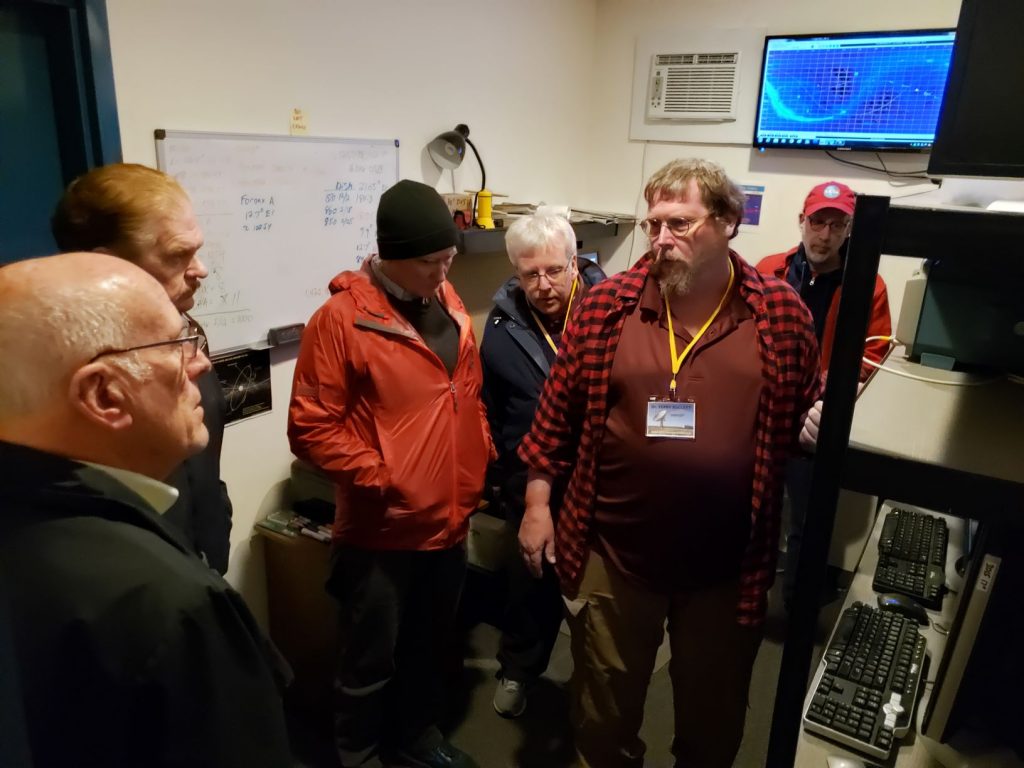
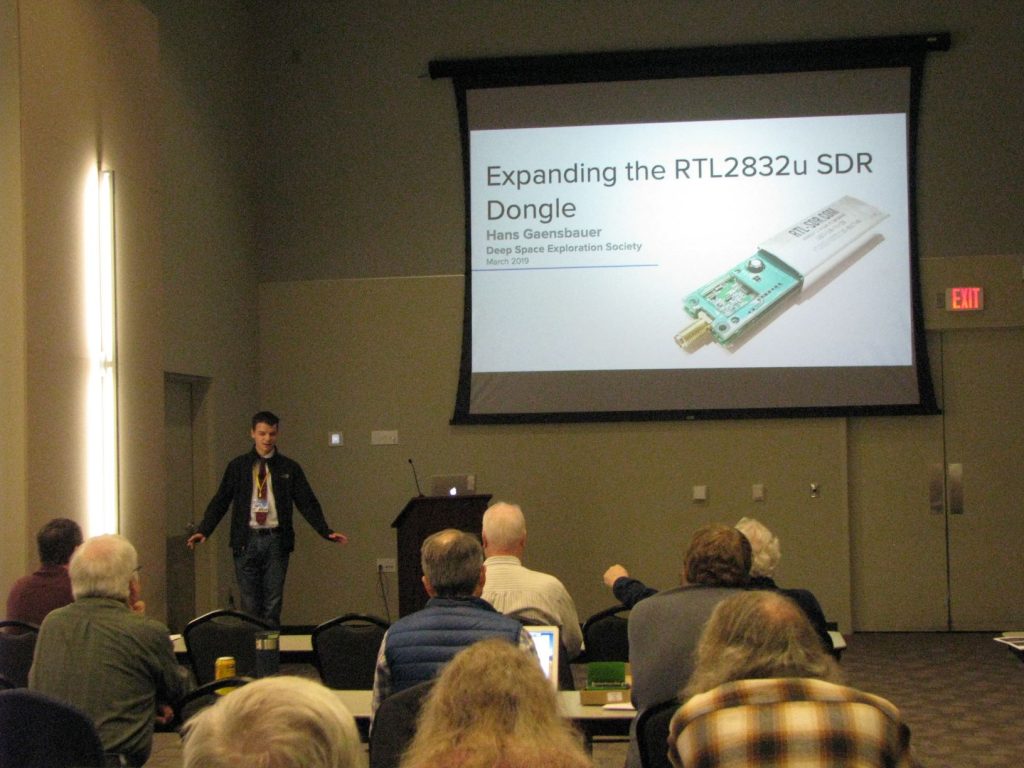
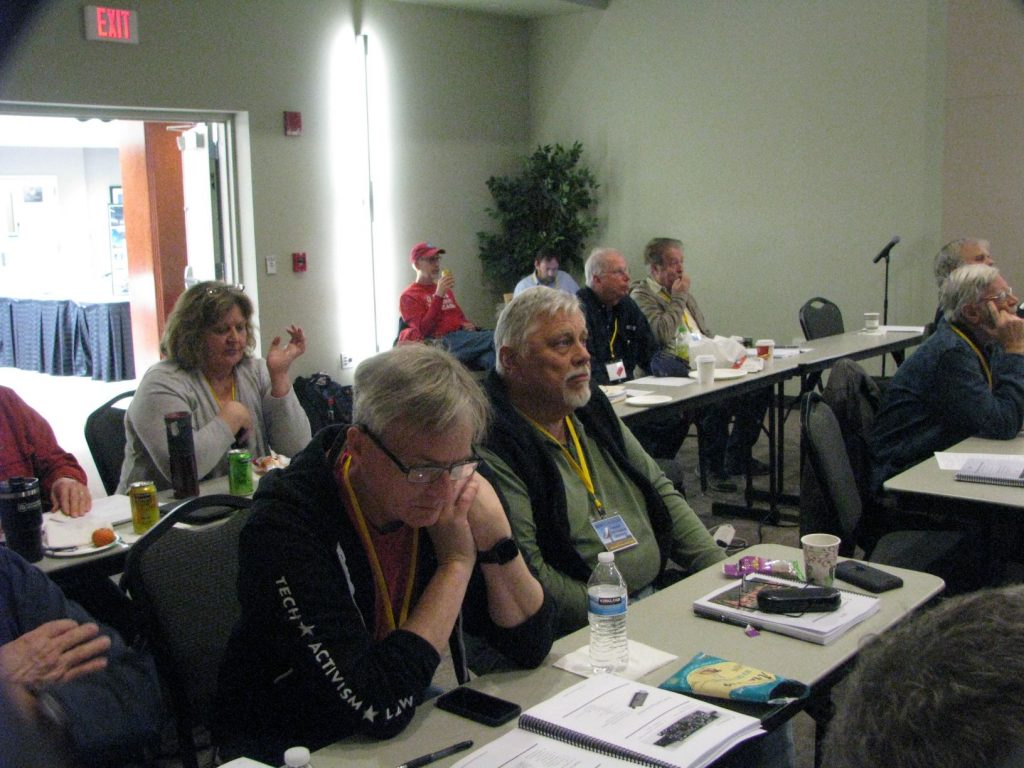
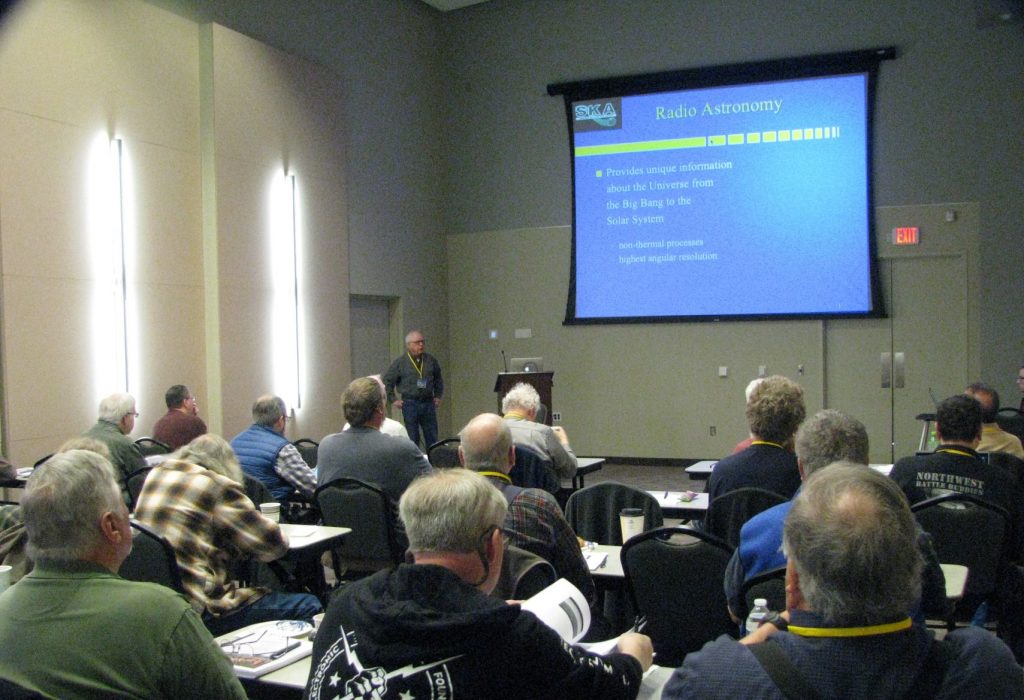
Photos from the visit to the DSES radio telescope site in Haswell.




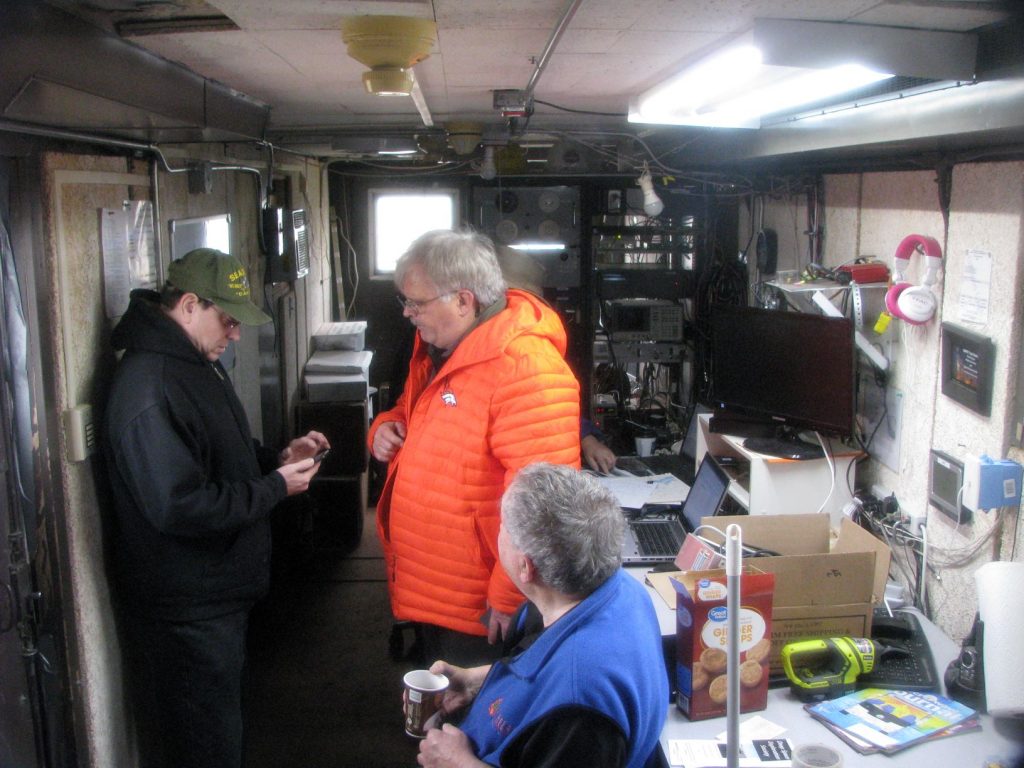
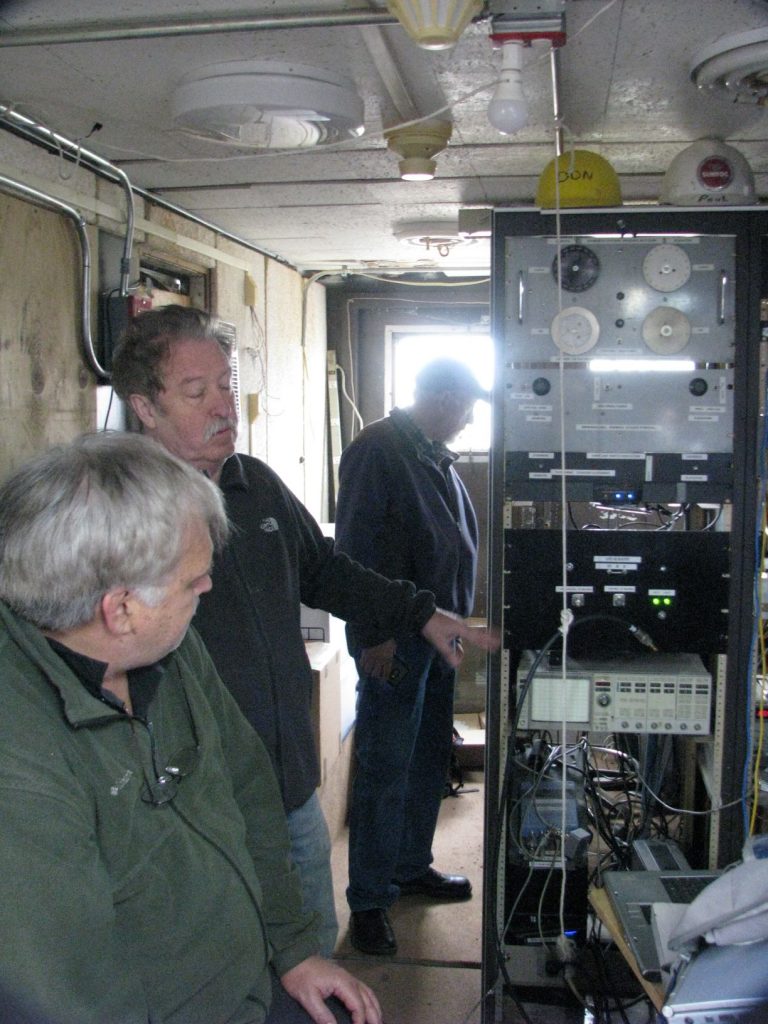

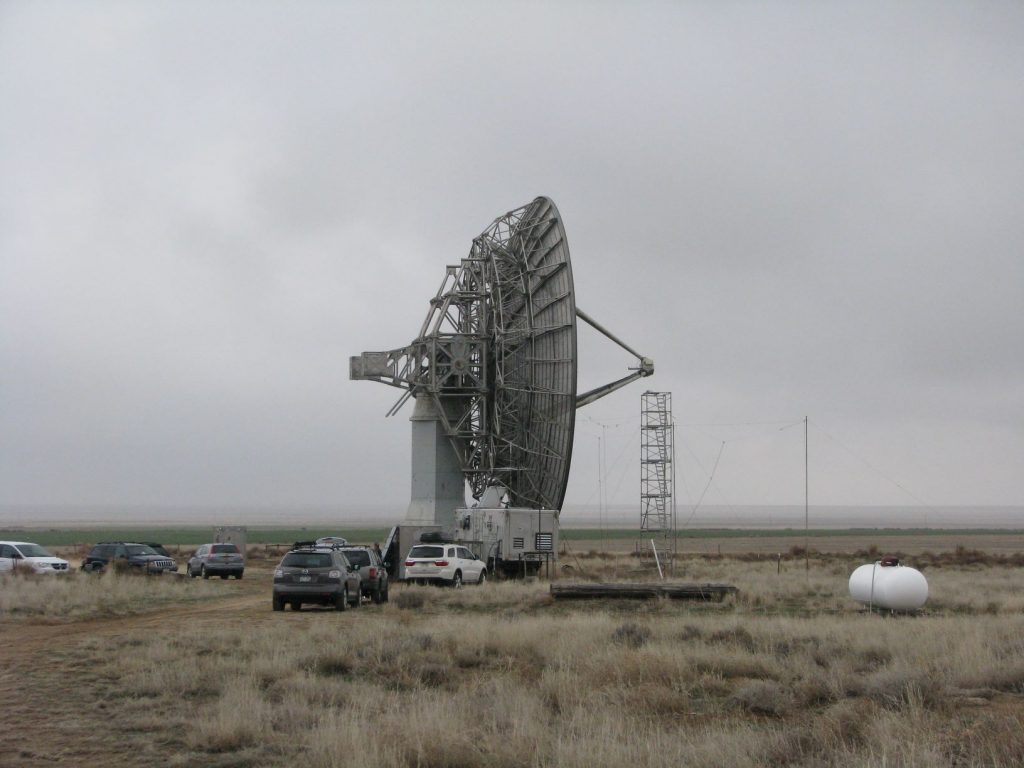

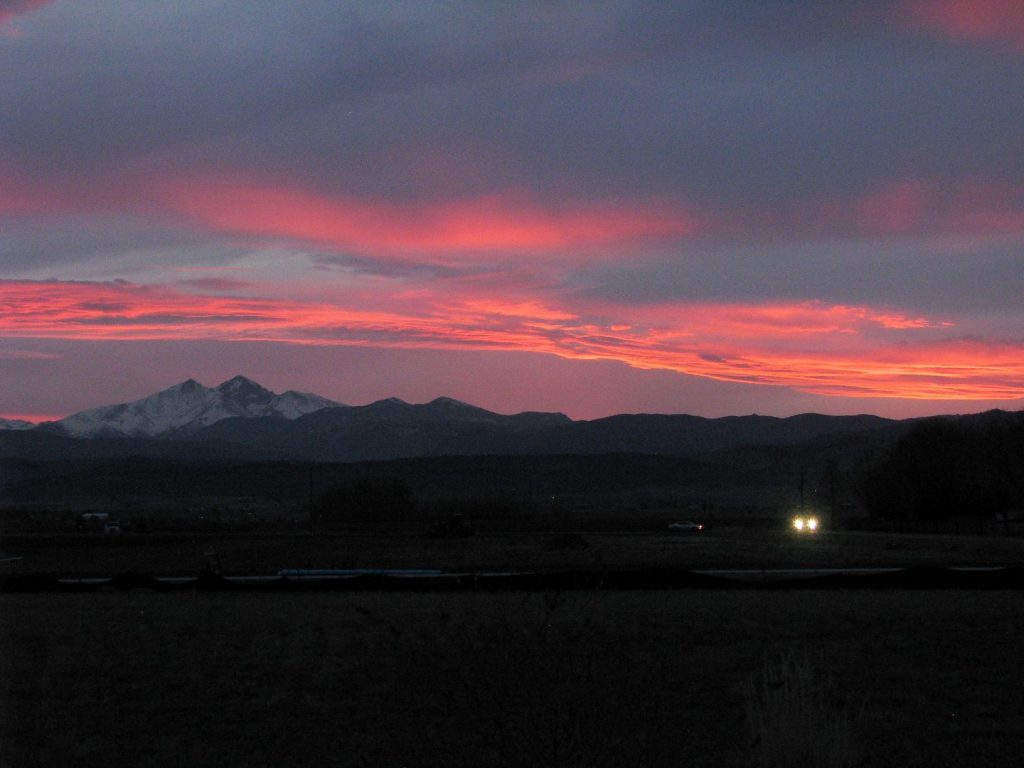
On Sunday March 9, 2019 a group of Deep Space Exploration Society members in Colorado Springs salvaged a 2 meter diameter satellite dish antenna, to repurpose it for solar radio astronomy. The antenna came from the KCME commercial broadcast station, which was no longer using it. The group moved the antenna to the home of DSES member Floyd Glick. Floyd will configure and test it there, to use for solar radio astronomy. It will then eventually be moved to the group’s Plishner antenna site in Kiowa County.
The DSES members who participated were Steve Plock, Ed Corn, Floyd Glick, Myron Babcock, Bill Miller, Bob Haggard, and Gary Agranat.
Here are some photos from the move, taken by Bob Haggard, and one photo by Gary Agranat.













Deep Space Exploration Society members Bill Miller, Gary Agranat, and Tony Bigbee participated as judges at the 2019 Pikes Peak Regional Science Fair. The Fair was held at the University of Colorado at Colorado Springs University Center building on Saturday February 23rd. This year 115 students from 20 schools presented projects. The purpose of the fair is to encourage students to take more active interest in the study of science and mathematics, to encourage experiment and consideration of science careers, and to provide a means of reward and recognition. Informally the fair gives students an opportunity to interact with and get helpful feedback from specialists already in the fields.
Bill and Gary were at the science fair to judge and award prizes specifically offered by DSES. The prizes were offered to encourage projects related to astronomy and radio. However any outstanding STEM project related closely enough to the fields were considered. Bill and Gary interviewed 17 students in 16 projects at the fair, at the middle school and high school levels, with most of the topics in physical sciences or engineering. A scoring criteria was used based on the qualities of the ideas, hypotheses, methods, data, and lessons learned.
DSES awarded one Senior Division prizes and two Junior Division prizes:
For outstanding senior division project we gave a certificate and $100 to Mark Bloomfield. Mark received 6 additional special awards from other organizations, and he placed 3rd in the Fair’s Senior Physical Sciences category.
• Mark Bloomfield [grade 11] [project SC9], Coronado High School/David Bloomfield: ‘‘Charged up: Testing lithium ion battery performance using a Raspberry Pi load cell’’
For the two Junior Division prizes we gave a certificate and $50 each to Hailey Kressen and Benjamin Homan.
• Hailey Kressin [grade8] [project 8E10], The Classical Academy JHS/Candus Muir: ‘‘A sixth sense: Omnidirectional presence detection system’’. Hailey received 6 additional special awards, and she placed 2nd in the Grade 8 Physical Sciences & Engineering category.
• Benjamin Homan[8] [8E1], Monument Academy/Karl Brown: ‘‘Does pressure affect carbon dioxide absorption by polyethyleneimine?’’ Benjamin received 5 additional special awards, and he placed 4th in the Grade 8 Physical Sciences & Engineering category.
Tony participated as a general Award Judge for the Fair itself. He judged middle school social and behavioral science projects.
Tony took a few minutes to take some photos. The first three photos are from when Bill and Gary interviewed Connor Takenaka about his cybersecurity project. The third includes Tony.
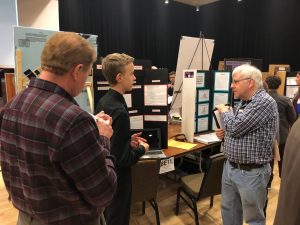
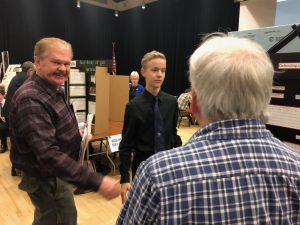

Bill is show interviewing Josh Nakka and Katelynn Salmon for their Senior level science project “Engineering a portable refreshable braille device for improved communication.” Gary is interviewing Jenna Salvat for her Senior level science project “A geothermal analysis of metamorphic lithologies surrounding Cripple Creek and Victor Diatreme”.
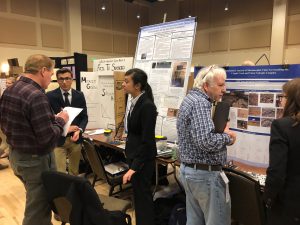
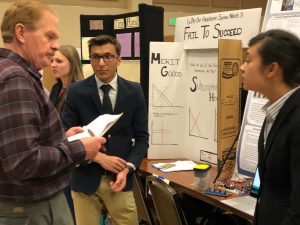
Projects Bill and Gary interviewed:
Bill presented the DSES awards at the science fair awards ceremony on the following Tuesday, February 26th.
The Pikes Peak Regional Science Fair created this nice video about the activities and the students in the science fair:
2019 Pikes Peak Regional Science Fair [https://vimeo.com/319543131].
Skip Crilly gave this presentation to the New Hampshire Astronomical Society, February 8, 2019.
Geographically-spaced Synchronized Signal Detection System (Please click to read pdf presentation.)
Abstract: Radio Frequency Interference (RFI) is a confounding problem in radio SETI, as false positives are introduced into receiver signals. Various methods exist to attempt to excise suspected RFI, with a possibility that true positives are rejected, and that un-excised RFI remain as false positives. Uncertain far side-lobe antenna patterns add to the uncertainty. To ameliorate the RFI problem, a system having geographically-spaced simultaneous and synchronized reception has been implemented. A radio telescope at the Green Bank Observatory in Green Bank, West Virginia has been combined with a radio telescope of the Deep Space Exploration Society, near Haswell, Colorado to implement a spatial filter having a thrice-Moon-distance transmitter rejection. Approximately 135 hours of simultaneous synchronized pulse observations have been captured from November 2017 through February 2019. This presentation describes the problem, observation system, observed results and a proposed hypothesis to be subjected to attempts at refutation through further experimentation and RFI and ETI transmitter signal model development.
Two wave audio files from the presentation, “Tones” and “Slow Tones”:
Below are the DSES Technical & Operations Meetings Minutes for November 12, 2018 and January 14, 2019, by DSES Vice President and Acting Secretary Bill Miller. Please click the links to open the PDF files.
DSES Technical & Operations Meetings Minutes for January 14, 2019
DSES Technical & Operations Meetings Minutes for November 12, 2018
By Paul Berge.
Winston W. Scott Jr. “ Scotty” callsign K0TEP and a DSES lifetime member died Feb 2, 2018.
Scotty was a true gentleman and a scholar.
He was born in Escondido, Ca in 1935. He earned an Electrical Engineering (EE) degree at UC Berkeley and was employed by the National Bureau of Standards (NBS) in Boulder in the Electromagnetic Engineering Lab for many years.
He was the sole inventor of an RF amp-meter patented while he worked there. His work included papers published in the IEEE Proceedings.
Scotty married Barbara in 1959 and they raised four daughters. After more than 50 years of marriage Barbara died in 2017.
Scotty was aware of the work done by NBS at the Table Mountain Field Site, which included thunderstorm detection, over the horizon radar, tropospheric-scatter, and he also knew that the 18 meter dishes were abandoned.
DSES was founded by engineers Jan King and Rex Craig, Scotty’s son-in-law (also at NBS/NIST), who were working on AMSAT micro-satellites. They were able to convince the Department of Commerce that letting this amateur group use an 18 meter dish on Table Mountain was a good idea.
Scotty provided inspiration, interest, and funding to help launch and sustain DSES on Table Mountain for many years.
After his work at NBS, Scotty co-founded Laerie Inc. in Berthoud, CO, a successful business specializing in repair calibration and certification of test and measurement equipment.
Scotty was a kind and generous man who is being missed by all who knew him. DSES probably wouldn’t have existed without him.

Deep Space Exploration Society
4164 Austin Bluffs, #562
Colorado Springs, CO 80918-2928
To all Deep Space Exploration Society (DSES) Current and Former Members:
Want to wish everyone a Happy New Year! Today marks the first day of our 2019 membership drive. DSES started the year 2018 with 51 members and ended the year with 63 members. Our organization relies on annual membership dues to fund most all of the DSES projects and monthly operating costs at our Paul Plishner Radio Astronomy and Space Sciences Center near Haswell, CO. Annual dues for voting members, continues to be $50.00. For those who wish to be involved as non-voting members the price is $20.00. Annual elections of board members/officers will be in early February. You must be current on your dues to vote in this election. For those recent members who have joined since October 1, 2018, your dues will carry you over into 2019.
You can pay your dues on the DSES web site (DSES.science) by credit card or PayPal to dsestm@gmail.com You can also mail dues to the following addresses: DSES, 4164 Austin Bluffs Pkwy #562, Colorado Springs, CO 80918-2928. Your canceled check, Paypal receipt or credit receipt will be your acknowledgement of your dues paid. If you want a separate receipt signifying payment, please note that with your payment and I will mail you a receipt. Please Include your current mailing address, email address, amateur radio call sign (if any), and phone number. Also let me know if you DO NOT want this info to be released to the general membership. I would like to pass this membership information containing email addresses and phone numbers out to all members.
Please feel free to email or call me if you have any questions or if you have a change of any contact information, email, phone or snail mail.
Thank You for your support.
Myron F. Babcock
DSES Treasurer
dsestm<at>gmail<dot>com
December 28, 2018